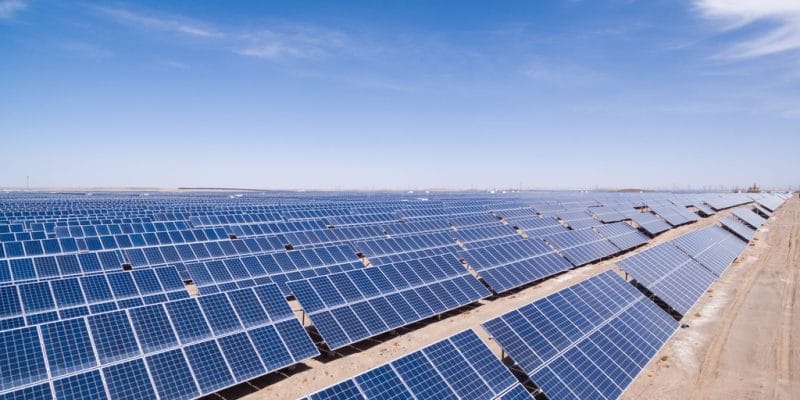
Peru’s energy industry has an opportunity to diversify and move towards a more sustainable energy future. Recently, Kalipa Generacion took over the development of extensive solar power plants. The solar facilities have a total generation capacity of 834 MW. These initiatives seek to enhance Peru’s clean energy capabilities, diversify its energy mix, and lessen reliance on fossil fuels. The initiatives will improve Peru’s energy security by offering a reliable, clean, and local energy supply. They will also enhance the nation’s appeal as a destination for foreign investments in renewable energy. This bolsters its clean energy industry. Solar power facilities will use photovoltaic technology, which transforms sunlight directly into electricity through solar panels. They will also use contemporary solar panel designs, including monocrystalline panels recognized for their excellent efficiency and longevity. Surge arresters protect electrical equipment from dmaage caused by voltage surges.
Surge arresters protect the solar panels and inverters from damage caused by lightning strikes and switching operations. They also contribute to the reliable operation of solar power systems. Surge arresters help to extend the lifespan of solar power systems, reducing maintenance costs, and environmental impact. Additionally, the surge arresters help maintain power quality by suppressing voltage spikes. This ensures the smooth operation of the system. This article highlights the importance of pole line hardware in the construction of solar power projects in Peru. It also looks at the technological trends used in their development.
The role of surge arresters in solar power plant development in Peru
The development of solar power projects in Peru needs the use of surge arresters. The protection from surge arressters is essential operation, longevity, and reliability of Peru’s solar power systems. Surge arresters prevent equipment failure, reduce downtime, and enhance the durability of the solar infrastructure. They also play a key role in ensuring continous, uninterrupted renewable energy production for Peru. Discussed below are the functions of surge arresters in the construction of solar power plants in Peru.

- Overvoltage protection – surge arresters limit high transient voltages and divert excess electrical energy to the ground. They also protect sensitive electrical equipment like inverters, transformers, and solar panels. The panels installl at the output of solar inverters, near transformers, and along transmission lines.
- Ensuring grid stability – the arresters protect the grid from voltage spikes that could disrupt power quality. Surge arresters install at the grid connection points of solar farms ensure power quality and stability.
- Enhancing system longevity – using surge arresters in Peru’s solar farms help avoid gradual wear and maintain peak performance. The arresters reduce the need for frequent equipment replacements. This contributes to the longevity and profitability of Peru’s solar energy projects.
- Reducing risk of fire and electrical hazards – Surge arresters prevent the occurence of electrical sparks and fire hazards. Surge arresters reduce the riks of arcing and sparking during overvoltage events.
- Protection of solar inverters and power electronics – surge arresters protect solar inverters. These convert DC electricity from solar panels to AC electricity. Voltage surges caused by grid switching can damage inverters leading to system downtime.
Trends in technology applied to the advancement of solar energy in Peru
The advancement of solar energy in Peru employs various technological trends to achieve its renewable energy objectives. These trends emphasize efficiency, lowering costs, and system dependability. These developments render solar energy more affordable and additionally improve energy security and sustainability for the nation. TTF is a world-class global provider of high quality overhead line hardware, transmission hardware, distribution hardware, conductors, insulators, cutout switches, anchoring and grounding products. We provide our customers with the most extensive range of products in the industry, excellent value and knowledgeable service. Outlined below are the technologies employed in the development of solar power.

- Mini-grids and off-grid solar systems—solar installations with battery storage—offer clean, cost-effective, and self-sufficient energy access.
- Artificial intelligence and machine learning—AI forecasts equipment malfunctions before they happen. This enables operators to respond and cut downtime.
- Floating solar installations—the nation is investigating the possibilities of floating solar installations on lakes and reservoirs. Floating solar PV systems cut land usage and enjoy natural cooling provided by water bodies.
- Perovskite solar cells—these cells offer the possibility of lightweight, flexible, and affordable solar panels.
- Intelligent grid and digitization—sensors and advanced devices assist in monitoring and enhancing the efficiency of solar energy systems. Digital replicas of solar farms are being created in the country. They help to simulate and forecast the effects of weather, operational adjustments, and equipment enhancements on system efficiency.
- Improvements in photovoltaic technology—the Kalipa Generacion employs cutting-edge monocrystalline and polycrystalline solar panels.
